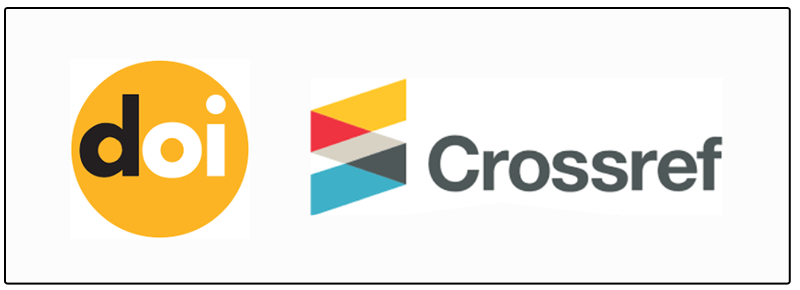ANALISIS KEBUTUHAN DAN KETERSEDIAAN AIR BERSIH DI KOTA BUNTOK KABUPATEN BARITO SELATAN
ANALYSIS OF CLEAN WATER NEED AND AVAILABILITY IN BUNTOK CITY, BARITO SELATAN REGENCY
Keywords:
Proses Air Bersih, Kapasitas Intake, Kapasitas IPA, Kebutuhan Air Bersih, Ketersediaan Air Bersih, clean water, clean water availability, clean water needs, intake capcity, IPA capacityAbstract
Kota Buntok adalah salah satu kota yang berada di Provinsi Kalimantan Tengah. Kota ini terus mengalami peningkatan terhadap jumlah penduduk sehingga kebutuhan akan air bersih semakin meningkat pula. Ketersediaan air bersih yang terbatas menjadi salah satu faktor permasalahan yang sekarang terjadi di kota Buntok. Ketersediaan air yang tidak memadai tentu akan berdampak negatif bagi masyarakat apalagi untuk daerah yang jauh dari Daerah Aliran Sungai (DAS). Penelitian ini bertujuan untuk mengetahui kebutuhan dan ketersediaan air bersih yang ada di Kota Buntok sampai 10 tahun mendatang. Perhitungan kebutuhan air bersih dihitung dari data jumlah penduduk 10 tahun terakhir yang kemudian dihitung sesuai dengan kriteria kebutuhan air bersih. Ketersediaan air bersih dihitung dari data kapasitas IPA yaitu 85 lt/dt dan kapasitas Intake PDAM yaitu 80 lt/dt dikurangi hasil perhitungan Kebutuhan air rata-rata pelanggan, Kebutuhan harian maksimum pelanggan, dan kebutuhan jam puncak pelanggan sehingga diperoleh hasil Balance Kapasitas IPA = 9,163 lt/dt (2022), 7,885 lt/dt (2023), 6,608 lt/dt (2024), 5,330 lt/dt (2025), 4,053 lt/dt (2026), 2,775 lt/dt (2027), 1,498 lt/dt (2028), 0,220 lt/dt (2029), -1,057 lt/dt (2030), -2,335 lt/dt (2031). Dari hasil penelitian disimpulkan bahwa ketersediaan air bersih di kota Buntok saat ini, masih belum dapat mencukupi kebutuhan masyarakat hingga 10 tahun mendatang.
Â
Â
Buntok City is one of the small cities in Central Kalimantan Province, which continues to experience an increase in population so that the need for clean water is increasing as well. The limited availability of clean water is one of the problems that are now happening in the city of Buntok. This of course must be considered considering the importance of clean water for the community both now and in the future. Inadequate water availability will certainly have a negative impact on the community, especially for areas far from watersheds (DAS). This study aims to determine the need and availability of clean water in Buntok City for the next 10 years whether it is still being met or not, as well as provide solutions for related parties regarding the availability of clean water that exists today so that it is able to meet future needs. . Calculation of the population's clean water needs in the next 10 years is calculated from the population data for the last 10 years which is then calculated according to the criteria for clean water needs. The availability of clean water is calculated from the WTP capacity data, which is 85 lt/sec and the PDAM Intake capacity is 80 lt/sec minus the calculation results of the average customer water requirement, the maximum daily requirement of the customer, and the peak hour requirement of the customer so that the results of the IPA Capacity Balance = 9,163 lt/sec (2022), 7,885 lt/sec (2023), 6,608 lt/sec (2024), 5,330 lt/sec (2025), 4,053 lt/sec (2026), 2,775 lt/sec (2027), 1,498 lt/ s (2028), 0.220 lt/s (2029), -1.057 lt/s (2030), -2,335 lt/s (2031).
From the results of the research above, it can be concluded that the current availability of clean water in the city of Buntok is still unable to meet the needs of the community for the next 10 years.
References
Achmad, dkk. 2011. Panduan Lengkap Jamur. Jakarta: penebar swadaya.
Adioetomo SM dan Samosir OB. 2010. Dasar-dasar Demografi edisi 2. Jakarta: Penerbit Salemba Empat.
Agus yunanto, 2015. Analisis Kebutuhan Air Bersih Dan Ketersediaan air bersih di IPA sumur dalam Banjarsari PDAM kota Surakarta terhadap jumlah pelanggan
Brahmanja, Ariyanto, A., & Fahmi, K. (2013). Prediksi Jumlah Kebutuhan Air Bersih Bpab Unit Dalu - Dalu 5 Tahun Mendatang (2018) Kecamatan Tambusai Kab Rokan Hulu. Jurnal Mahasiswa Teknik UPP, Vol 1(No 1).
Google Maps PDAM Tirta Barito Kota Buntok
Hardiyatmo, D., Sahara, I., & Rangkuti, H. 2010. Pedoman Perhitungan Proyeksi Penduduk dan Angkatan Kerja. Jakarta: Badan Pusat Statistik.
Hendriyani, I., Kencanawati, M., & Salam A. N. 2019. Analisis Kebutuhan Air Bersih IPA PDAM Samboja Kutai Kartanegara. Media Ilmiah Teknik Sipil, 7(2), pp. 87-97.
Kriteria Perencanaan Ditjen Cipta Karya PU,1996. Modul Proyeksi Kebutuhan Air dan Identifikasi Pola Fluktuasi Pemakaian Air
Latif, Abdul. 2012. Pemanfaatan Air Hujan Melalui Teknologi Water Bank Untuk Memenuhi Ketersediaan Air Bersih Disalah Satu Desa Kabupaten Bandung Barat. Bandung.
Peureulak, I., Sifat-Sifat Fisik Serta Kimia Air Laut, diakses pada tanggal 6 September 2010, http://jenieb-nautika.blogspot.com/2009/10/sifat-sifatfisik-serta-kimia-air-laut.html
Salmani. 2018. Rekayasa dan Penyediaan Air Bersih. Yogyakarta: Deepublish.
Sirang, K. 2011. Kajian Potensi Ketersediaan Sumber daya Air di Daerah Aliran Sungai Sebelimbing Kabupaten Kota Baru. Jurnal Hutan Tropis, 12(32), pp. 150-156.
Sugiyono. 2017. Metode Penelitian Kuantitatif, Kualitatif dan R&D. Bandung: Alfabeta.
SNI 19-6728.1:2002, Penyusunan neraca sumber daya – Bagian 1: Sumber daya air spasial.
SNI 6278.1:2015, Penyusunan neraca sumber daya – Bagian 1: Sumber daya air spasial
SNI 6728:1:2015, Penyusunan neraca spasial sumber daya alam – Bagian 1: Sumber daya air
Sudjana. 1982. Metoda Statistika. Bandung: Tarsito.
Syaputra, B. 2020. Penentuan Faktor Jam Puncak dan Harian Maksimum Terhadap Pola Pemakaian Air Domestik di Kecamatan Kalasan, Sleman, Yogyakarta. Jurnal Lingkungan Sultan Agung. 1(1), pp. 1-15.









